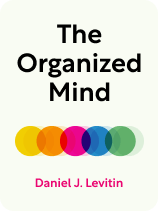

This article is an excerpt from the Shortform book guide to "The Organized Mind" by Daniel J. Levitin. Shortform has the world's best summaries and analyses of books you should be reading.
Like this article? Sign up for a free trial here.
Do thoughts pop into your head and distract you? Did you just remember that you need to buy bananas?
Neuroscientist Daniel J. Levitin explains how to stop getting distracted by thoughts by using a practical notecard system. This works because it sorts and stores information outside of your brain.
Keep reading to learn how to use this system to deal with distracting thoughts and stay focused on the task at hand.
How to Stop Getting Distracted by Thoughts
Our brains naturally want to wander—which often leads us to think of random but important thoughts at inopportune times. Sometimes, these distracting thoughts keep you from a more important task; other times, they merely arise when you can’t do anything about them. For example, you might remember that you need to call the dentist on the weekend when the dentist’s office is closed.
Here’s Levitin’s advice on how to stop getting distracted by thoughts: Use a notecard system. This externalizes and sorts your thoughts to ensure you get to them eventually. Carry a pack of 3 x 5 notecards. Every time you think of something unrelated to your current task, write it down. For even more dramatic results, spend a few minutes before difficult tasks writing down other things that might grab your attention. Doing so will clear your mind of internal distractions and improve your ability to concentrate. It’s critical to put only one thought on each card so that you can sort them more easily in the second step. For example, if you need to find recipes and go grocery shopping, write each task on separate cards.
Second, Levitin suggests that you sort these cards daily. If you only have a few cards, you can sort them by priority. But if you have many, sort the cards into categories, then order them by priority within each category. These categories can be anything you like; some people divide their cards by urgency, while others divide them by topic. For best results, Levitin recommends you keep these cards relatively loose (for example, not in a binder) so that you can reorganize them easily as your priorities change. If you struggle to find a particular category within your pile of loose cards, add one colored title card per category so you can find them easily.

———End of Preview———
Like what you just read? Read the rest of the world's best book summary and analysis of Daniel J. Levitin's "The Organized Mind" at Shortform.
Here's what you'll find in our full The Organized Mind summary:
- The key to living less stressfully in the modern world
- Why our current approach to dealing with stress doesn’t work
- Strategies for sorting and externalizing your thoughts, things, and relationships






